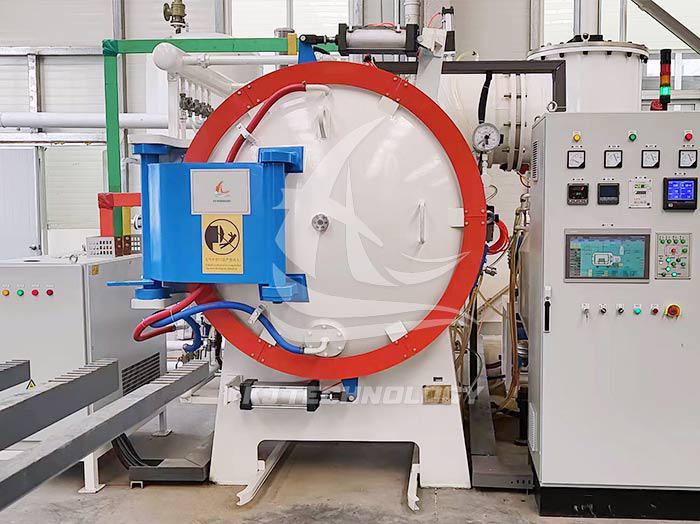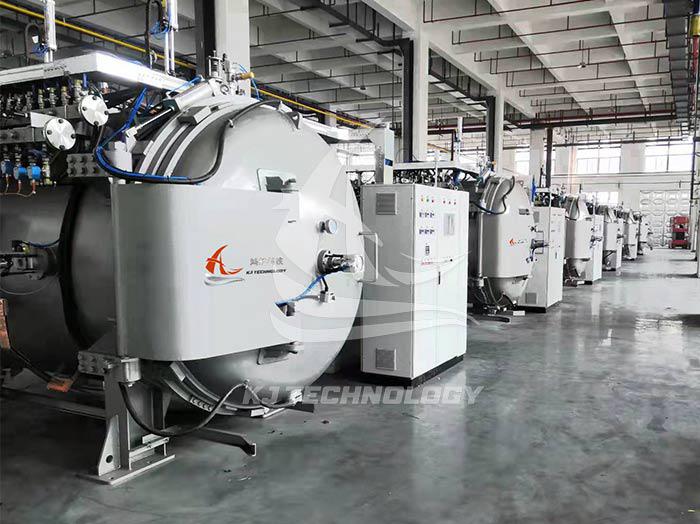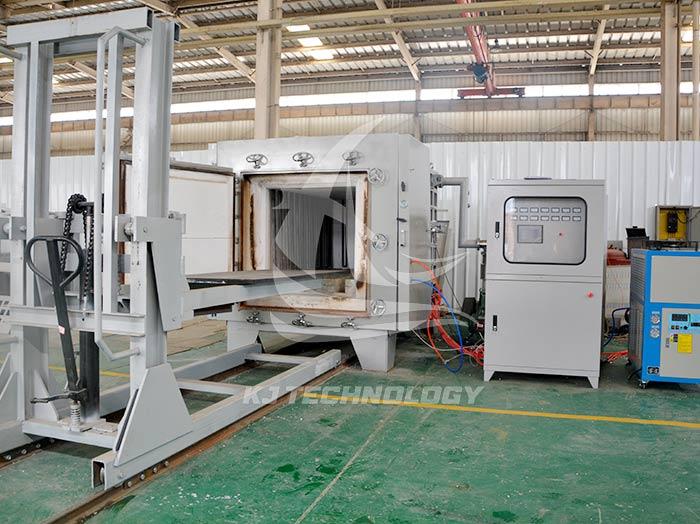What processes are high vacuum heat treatment electric furnaces used for?
 09-26-2025 Author: KJ technology
09-26-2025 Author: KJ technology
High vacuum heat treatment electric furnaces are widely used in metal heat treatment processes such as quenching, annealing, tempering, carburizing, nitriding, brazing, sintering, and surface treatment due to their advantages of no oxidation, no decarburization, small deformation, and environmental protection and energy saving. The specific application scenarios and advantages are as follows:
1. Quenching process
Gas quenching: Rapid cooling is achieved by injecting high-pressure inert gases (such as nitrogen and argon), resulting in a faster cooling rate. For example, after carburizing at 930 ℃ in a vacuum furnace, the gears of a car gearbox are subjected to high-pressure gas quenching, which significantly reduces deformation, reduces subsequent processing volume, and improves production efficiency and product qualification rate.
Oil quenching/water quenching: Some furnace types are equipped with oil tanks or water jackets, but attention should be paid to vacuum sealing and oil contamination control. The vacuum environment can avoid the oil fume mist generated by oil quenching, which is more in line with the trend of green manufacturing.
2. Annealing and tempering process
Vacuum annealing: eliminates internal stress in metals and improves processing performance. For example, the elongation of cold-rolled stainless steel plates increases after vacuum annealing, and the surface roughness of 316L stainless steel surgical instruments decreases after vacuum annealing, without the need for subsequent polishing.
Vacuum tempering: used for stress relief annealing and aging treatment of welded parts, reducing or eliminating residual stresses generated during the welding process, and improving the stability and performance of welded parts.
3. Carburizing and nitriding processes
Vacuum carburizing: Methane is introduced under low vacuum (10 ²~10 ³ Pa), and carbon atoms penetrate the surface of the steel to form a high hardness carburizing layer (depth up to 2mm, hardness HV 900~1200). For example, the surface hardness of automotive gears after vacuum carburizing reaches HV 600~650, and the wear resistance is higher than that of traditional gas carburizing.
Vacuum nitriding: Introducing nitrogen gas into a vacuum environment to achieve nitriding treatment on the metal surface, improving surface hardness and wear resistance.
4. Brazing process
Vacuum brazing: Heating to the melting point of the brazing material in a vacuum (10 ⁻³~10 ⁻² Pa) to achieve non oxidative connection of metal parts. For example, precision brazing of aircraft engine blades and turbine disks, as well as conductive connections of electronic components such as integrated circuits and transistors, rely on vacuum brazing technology to achieve high-precision and high reliability connections.
5. Sintering process
Powder metallurgy sintering: Vacuum environment helps to eliminate gases and impurities in the material, promoting material densification. For example, hard alloy parts sintered in a vacuum furnace result in higher density and significantly improve material strength.
Ceramic material sintering: Alumina ceramics are sintered at 1600 ℃ in a vacuum furnace, with higher density, and are used in high-end fields such as high-power LED packaging.
6. Surface treatment process
Vacuum coating: Coating the surface of materials in a vacuum environment to improve the wear resistance and corrosion resistance of the product. For example, providing vacuum annealing for metal additive manufacturing (SLM) parts to eliminate residual stress and improve dimensional stability.
Vacuum drying: used to remove moisture from substances and improve product quality. For example, in the semiconductor industry, vacuum heat treatment furnaces are widely used for diffusion and oxidation of silicon wafers, as well as packaging and testing processes of integrated circuits. The vacuum environment can effectively reduce pollution and improve product quality.
7. Special material processing
Active metal treatment: For chemically active metals such as titanium and zirconium, as well as refractory metals such as tungsten, molybdenum, niobium, and tantalum, a vacuum environment can prevent surface oxidation, hydrogen embrittlement, and other issues, ensuring material performance.
Nuclear material processing: Processing irradiated zirconium alloy cladding in a vacuum furnace to avoid environmental pollution caused by oxidation products.








